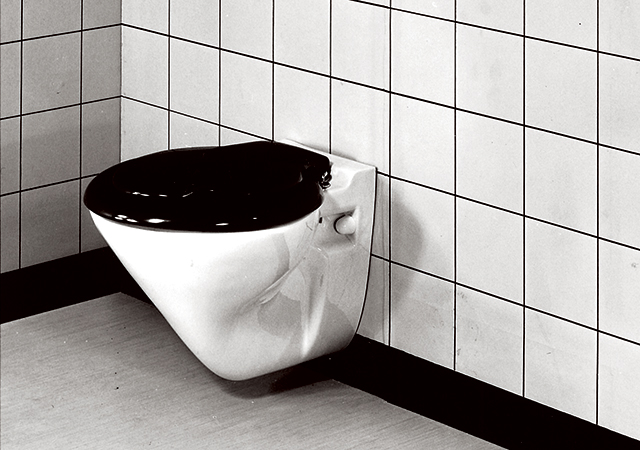
Innovation over the years: The “wall-mounted cistern no. 15,000” unveiled in 1964; the GIS, introduced in 1993; Geberit ONE bathroom series, launched in 2019.
Geberit’s innovation has transformed bathrooms
01 December 2024
In 1964, Geberit changed the face of bathroom technology by introducing the world’s first concealed cistern, hiding plumbing components behind the wall and marking a turning point in bathroom aesthetics, says the Swiss sanitary solutions provider, which this year marks its 150th anniversary.
This innovative solution – which came 12 years after Geberit introduced the first surface-mounted plastic cistern – tucked the flushing technology behind the wall, transforming not only aesthetics but also functionality.
The discreet design left only a flush button visible, allowing for a cleaner, modern look and ultimately transforming bathroom design worldwide.
 |
|
|
The revolutionary ‘Wall-Mounted Cistern No. 15,000’ debuted as a compact solution with a wall-mounted toilet, reducing bathroom projection to just 54 cm – a notable improvement for small spaces. It aimed to be a “reliable and quiet operating WC system for tight spaces”, as stated in its first brochure.
Despite its advantages, initial reactions in the plumbing sector were cautious, as traditional installation methods did not involve embedding cisterns within the wall and was seen by many plumbers as requiring greater effort. To address these concerns, Geberit developed “installation blocks” in the 1960s, pioneering the Montagefix metal frame system in 1975 to ease installation.
In subsequent years, Geberit launched further installation products, focusing on the system concept: everything was designed to work together as simply as
possible.
The real shift came in the 1980s with the spread of drywall techniques. Geberit launched the Geberit Installation System (GIS) in 1993, a milestone in plumbing installation technology. With GIS, plumbers could now construct freestanding false walls or prefabricate complete plumbing walls, significantly speeding up on-site installation. Three years later, Geberit launched the Duofix frame. These universal, quickly installable mounting components in traditional Geberit blue are now the most widespread installation components in the plumbing industry, the company states.
 |
|
|
Drywall construction offered more than just speed – it enhanced fire and sound insulation while allowing for more visually appealing bathroom designs. Concealed cisterns, paired with Geberit’s installation technology, transformed bathrooms from purely functional spaces into personal sanctuaries.
As demand grew, Geberit continued to push the boundaries of concealed installation with the launch in 2019 of the Geberit ONE series, integrating hidden fixtures throughout the bathroom. In addition to the toilet, the wash station and shower area also utilise the pre-wall system. The siphon is relocated to the pre-wall at the washbasin, storage space at the mirror cabinet, and the wall drain or storage box at the shower disappear into the wall.
“As innovative as the modern solutions are, they reliably perform their duties behind the wall. Plumbers still come across Geberit concealed cisterns from the early years that are still in operation,” says Louise Pitt, Head of Marketing and Communication (Gulf Office) at Geberit International Sales. “Geberit’s provision of spare parts for the concealed cistern for 50 years contributes to this.”
“What was considered avant-garde in 1964 is today standard in the plumbing industry. Geberit continues to set milestones in the industry with its expertise in design and function,” she concludes.
Geberit Group is a European leader in sanitary products with a global presence. It operates 26 production facilities, with four located overseas, and employs about 11,000 people in 50 countries. The company generated net sales of CHF3.1 billion ($3.49 billion) in 2023.
- Ideal Standard builds on innovative design
- Geberit’s innovation has transformed bathrooms
- Hansgrohe launches AXOR Citterio C


